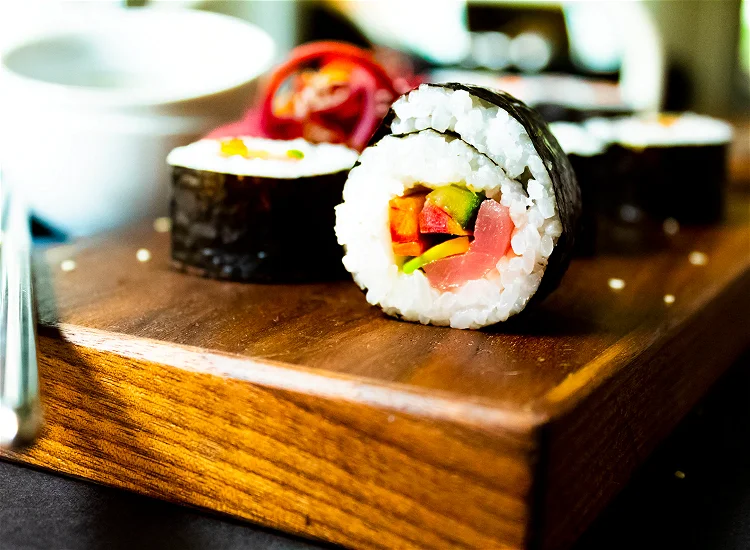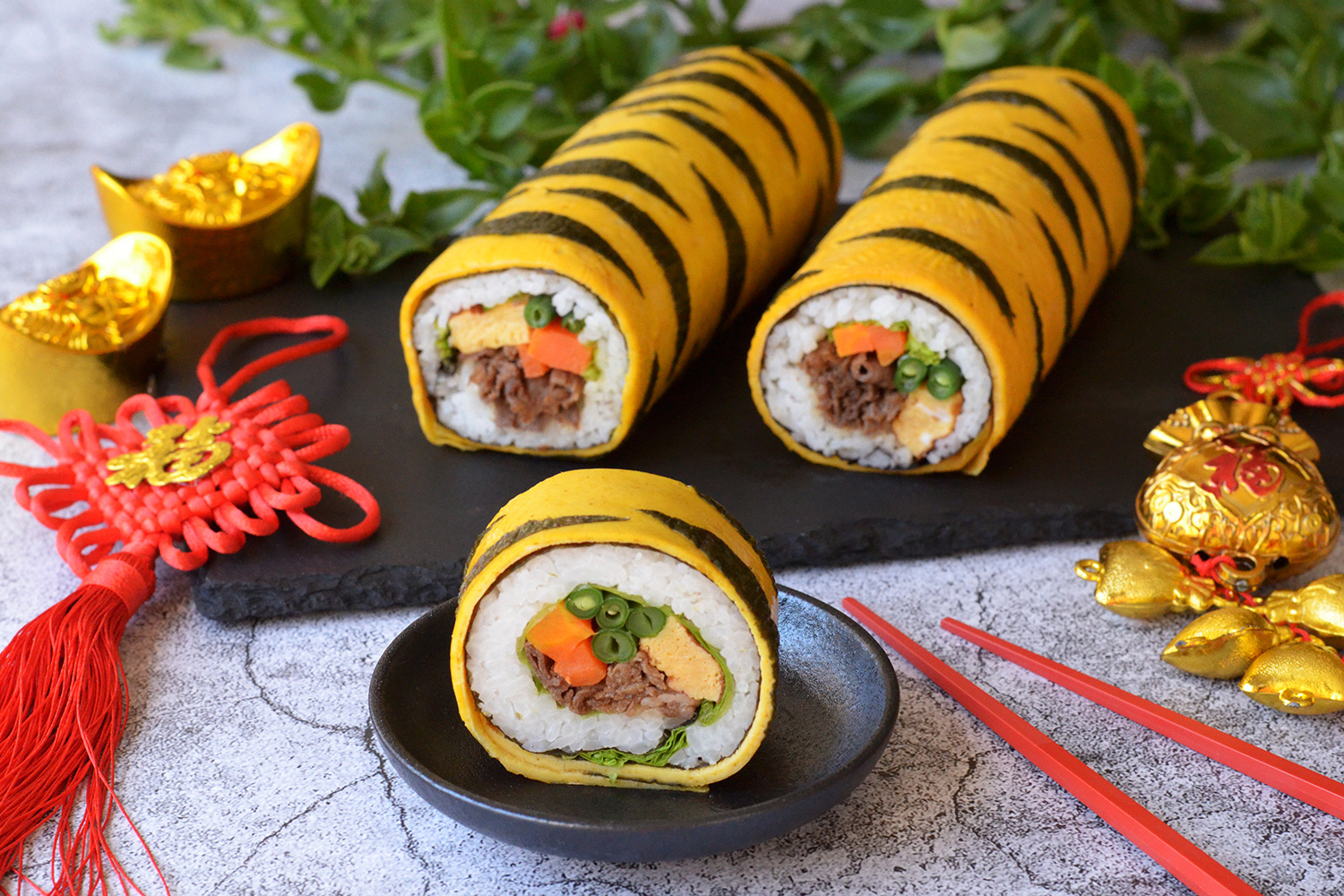Deliciously Simple: Easy Vegetarian Sushi Recipe
Written By James Morgan
Are you searching for a way to satisfy your sushi cravings without compromising your vegetarian lifestyle? Look no further! This easy vegetarian sushi recipe is exactly what you need. Packed with bold flavors, fresh vegetables, and delectable rice, this recipe is perfect for anyone wanting to explore the tasteful delights of Japanese cuisine without any fish or meat.

Why Choose a Vegetarian Sushi Recipe?
Sushi is a beloved dish all around the world, and for good reason. Not only is it delicious, but it's also versatile and can be adapted to suit various dietary preferences, including vegetarianism. This easy vegetarian sushi recipe provides you with a fantastic way to enjoy the iconic flavors of sushi while ensuring your meal aligns with your ethical and dietary choices. By incorporating fresh ingredients and using traditional sushi techniques, you can create a dish that's bursting with flavor, texture, and nutrients.

Related Recipes You Might Enjoy

The Ingredients You'll Need
Main Ingredients:
- 2 cups sushi rice
- 3 cups water
- 1/3 cup rice vinegar
- 3 tablespoons sugar
- 1 tablespoon salt
- 1 cucumber, sliced into thin strips
- 1 avocado, pitted and sliced
- 1 carrot, julienned
- 1 bell pepper, julienned
- 4 sheets nori (seaweed)
- Pickled radish
- Tofu
- Asparagus spears
- Spinach leaves

Step-by-Step Instructions for Easy Vegetarian Sushi
Step 1: Preparing the Sushi Rice
To kick off our easy vegetarian sushi recipe, begin by preparing the sushi rice. Rinse the rice under cold water using a strainer, ensuring that the water runs clear, indicating the removal of excess starch. Next, transfer the rice to your rice cooker along with 3 cups of fresh water. Refer to the manufacturer's instructions to cook the rice to perfect fluffiness.
Step 2: Seasoning the Sushi Rice
While the rice is cooking, it's time to prepare the seasoning mixture that will give the rice its authentic sushi flavor. In a small saucepan, mix the rice vinegar, sugar, and salt together. Heat the mixture over low heat until the sugar and salt are completely dissolved. Avoid boiling the mixture. Once done, set it aside to cool.
Step 3: Combining the Rice and Seasoning
When the rice is cooked, transfer it to a large wooden or plastic cutting board. Pour the vinegar mixture over the rice and, using a sushi spoon or spatula, gently fold and fan the rice to ensure even coating. The goal here is to cool the rice to room temperature while ensuring the grains remain separate and do not become mushy.
Step 4: Preparing the Vegetable Fillings
While the rice is cooling, it's time to prepare the fillings. Using sharp sushi knife, carefully slice the cucumber, avocado, carrot, and bell pepper into thin, even strips. Arrange the sliced vegetables neatly on a cutting board, making it easy to access them when rolling the sushi.
Step 5: Assembling the Sushi Rolls
Lay a sheet of nori on a bamboo rolling mat from your sushi making kit. Using your hands or a sushi spoon, spread a thin, even layer of the seasoned sushi rice onto the nori, leaving about an inch of space at the top edge. Arrange an assortment of vegetable strips horizontally across the center of the rice layer. Be sure not to overstuff, as this can make rolling difficult.
Step 6: Rolling the Sushi
With the fillings in place, it's time to roll the sushi. Lift the edge of the bamboo mat that's closest to you and carefully fold it over the fillings. Apply gentle but firm pressure to roll the nori and rice together, keeping the shape tight. Continue to roll until you've enclosed all the ingredients, using the exposed nori edge to seal the roll. A little water on your fingers can help the nori stick.
Step 7: Slicing the Sushi Rolls
Once your sushi rolls are assembled, it's time to cut them into bite-sized pieces. Moisten the blade of your sushi knife with water to prevent sticking. Slice the rolls with a smooth, back-and-forth motion, cutting them into even pieces. Arrange the sliced rolls on a platter for a beautiful presentation.
Serving and Enjoying Your Vegetarian Sushi
After your sushi is sliced, it's time to serve it up and dig in! Pair your homemade vegetarian sushi with traditional accompaniments like soy sauce, wasabi, and pickled ginger. If you're feeling adventurous, you can even create your own dipping sauces by mixing soy sauce with a touch of citrus juice or adding some sesame oil for an extra kick.
Delicious Variations to Try
While this basic easy vegetarian sushi recipe is delightful on its own, don't be afraid to experiment with different fillings and flavors. You can swap out any of the vegetables mentioned with your favorites or try adding unique ingredients like roasted sweet potato, mango slices, or sauted mushrooms. Mixing and matching fillings allows you to customize your sushi to your preferences and discover new combinations you love.
Conclusion
Making homemade sushi is a fun, rewarding, and delicious endeavor, especially when it's tailored to a vegetarian diet. With this comprehensive easy vegetarian sushi recipe, you have all the steps, tips, and tricks needed to create a stunning sushi spread that will impress your friends, family, or simply satisfy your own cravings. So gather your ingredients and tools, and get ready to roll out your culinary masterpiece.
Clean Up Tips
After enjoying a delicious meal, it's essential to take care of your cookware to ensure it lasts for future culinary adventures. For your tools, consider using a high-quality cookware cleaner to remove any residue safely. Additionally, using a cutting board oil will help maintain the quality of your cutting board, keeping it in top condition for your next homemade sushi session.
Learn more about preparing delicious sushi riceAs an Amazon Associate, I earn from qualifying purchases.



